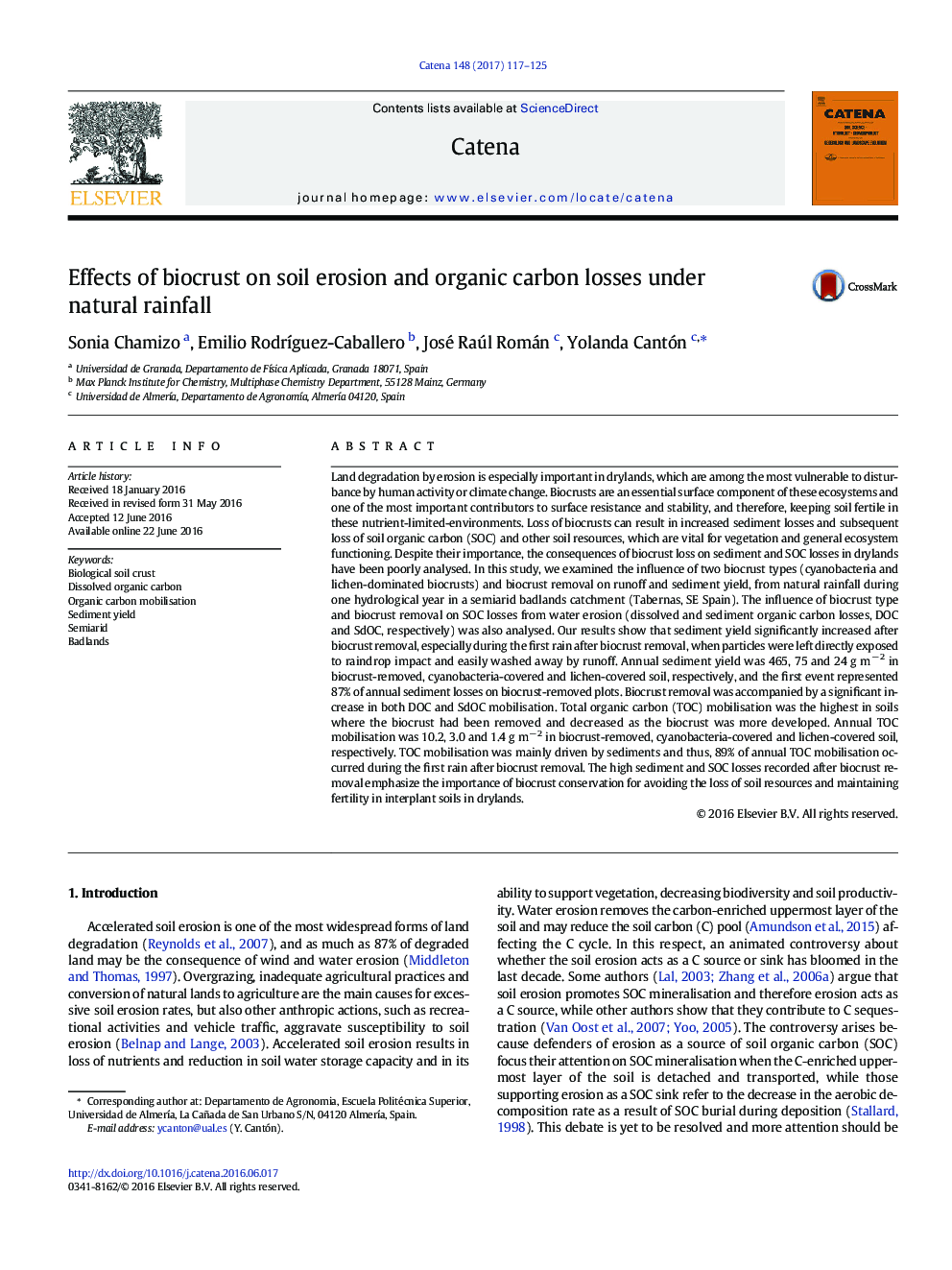| کد مقاله | کد نشریه | سال انتشار | مقاله انگلیسی | نسخه تمام متن |
|---|---|---|---|---|
| 5770198 | 1413276 | 2017 | 9 صفحه PDF | دانلود رایگان |
- Biocrusts strongly protect soil from water erosion and reduce TOC losses.
- Well-developed biocrusts are more effective in decreasing sediment yield and TOC loss.
- Sediment yield increased up to 20 times after biocrust removal.
- 89% of annual TOC mobilization occurred during the first rain after biocrust removal.
- Rainfall properties greatly influence sediment and TOC losses in biocrusted soils.
Land degradation by erosion is especially important in drylands, which are among the most vulnerable to disturbance by human activity or climate change. Biocrusts are an essential surface component of these ecosystems and one of the most important contributors to surface resistance and stability, and therefore, keeping soil fertile in these nutrient-limited-environments. Loss of biocrusts can result in increased sediment losses and subsequent loss of soil organic carbon (SOC) and other soil resources, which are vital for vegetation and general ecosystem functioning. Despite their importance, the consequences of biocrust loss on sediment and SOC losses in drylands have been poorly analysed. In this study, we examined the influence of two biocrust types (cyanobacteria and lichen-dominated biocrusts) and biocrust removal on runoff and sediment yield, from natural rainfall during one hydrological year in a semiarid badlands catchment (Tabernas, SE Spain). The influence of biocrust type and biocrust removal on SOC losses from water erosion (dissolved and sediment organic carbon losses, DOC and SdOC, respectively) was also analysed. Our results show that sediment yield significantly increased after biocrust removal, especially during the first rain after biocrust removal, when particles were left directly exposed to raindrop impact and easily washed away by runoff. Annual sediment yield was 465, 75 and 24 g mâ 2 in biocrust-removed, cyanobacteria-covered and lichen-covered soil, respectively, and the first event represented 87% of annual sediment losses on biocrust-removed plots. Biocrust removal was accompanied by a significant increase in both DOC and SdOC mobilisation. Total organic carbon (TOC) mobilisation was the highest in soils where the biocrust had been removed and decreased as the biocrust was more developed. Annual TOC mobilisation was 10.2, 3.0 and 1.4 g mâ 2 in biocrust-removed, cyanobacteria-covered and lichen-covered soil, respectively. TOC mobilisation was mainly driven by sediments and thus, 89% of annual TOC mobilisation occurred during the first rain after biocrust removal. The high sediment and SOC losses recorded after biocrust removal emphasize the importance of biocrust conservation for avoiding the loss of soil resources and maintaining fertility in interplant soils in drylands.
Journal: CATENA - Volume 148, Part 2, January 2017, Pages 117-125
